
Posts Tagged: flowering
Purple Reign
Sometimes you can't see the forest for the trees. Sometimes you can't see the trees for the...
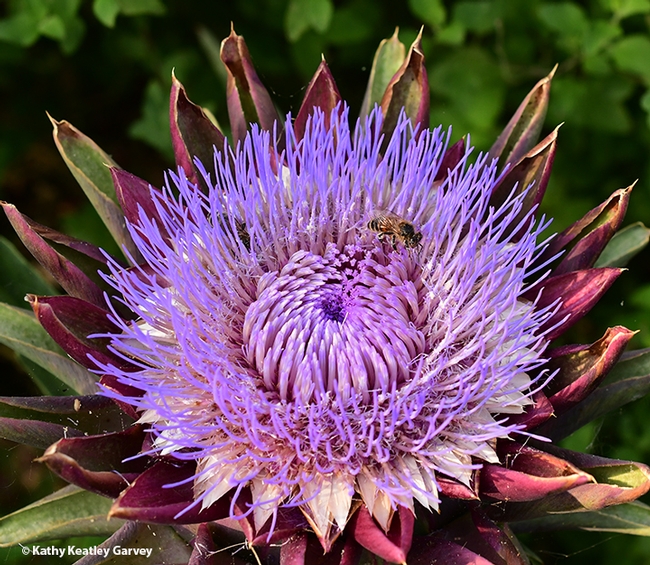
A honey bee visiting a flowering artichoke. (Photo by Kathy Keatley Garvey)
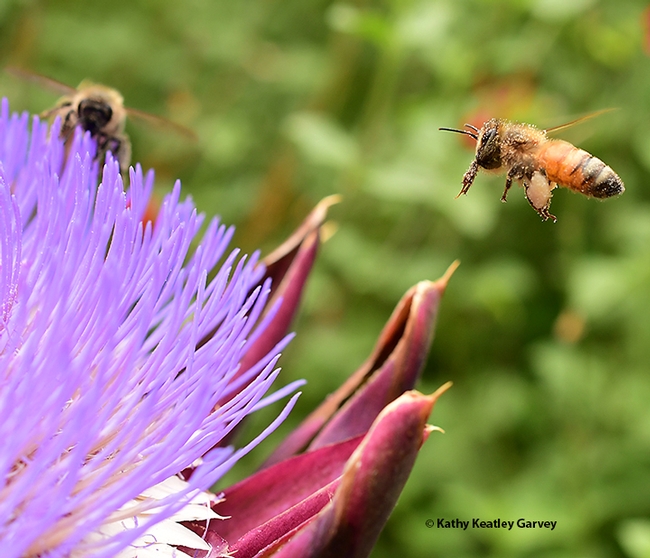
Packing white pollen, a honey bee makes a return visit to the flowering artichoke while she cleans her proboscis (tongue). (Photo by Kathy Keatley Garvey)
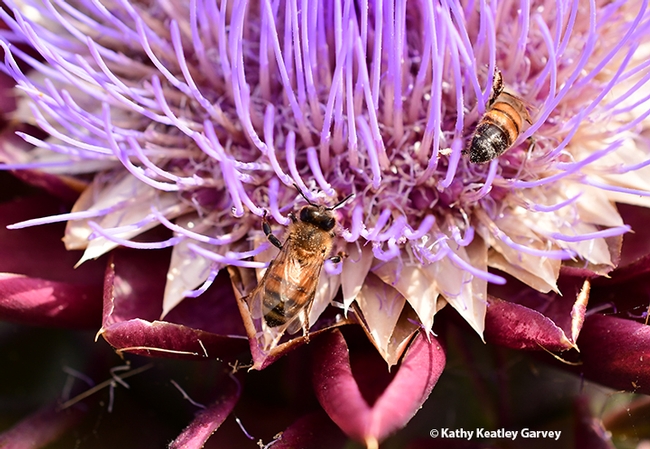
Two honey bees are dusted with pollen from the flowering artichoke. (Photo by Kathy Keatley Garvey)
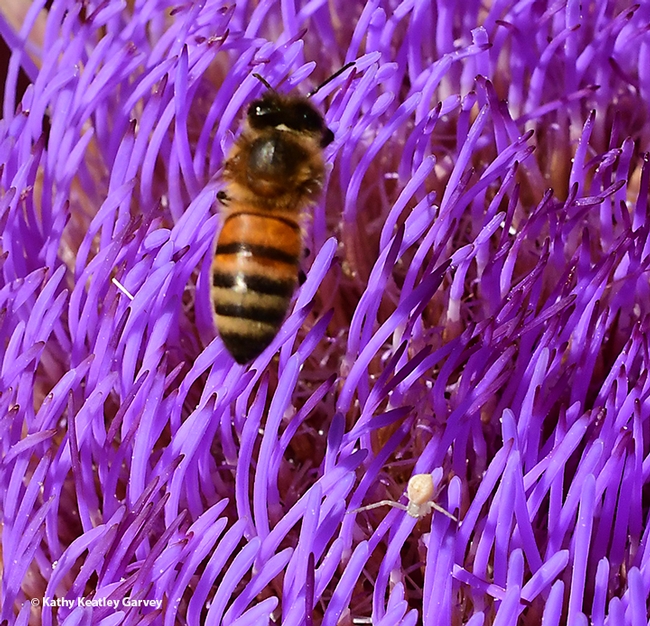
Bee-ware! A honey bee touches down--nearly on a tiny crab spider. (Photo by Kathy Keatley Garvey)
Delving Deeper into the Concept of Supplemental Chill
Supplemental chill, also known as cold conditioning, takes place after harvest of the transplants, which have gone dormant because of their exposure to the decreasing daylength and lower temperatures of the nursery fields of Northern California where they are grown. Postharvest supplemental chill occurs in a constant near freezing temperature, in the dark and when the transplant has no to very few leaves left on it.
What supplemental chill is actually doing is breaking (reversing) plant dormancy, which sets into motion a series of metabolic events in the plant resulting in a promotion of vegetative growth and inhibition of new inflorescence formation. Petioles grow longer, leaf blades get bigger and more runners are formed as dormancy is broken through supplemental chill. All of this is consistent with the industry understanding that a longer period of supplemental chill results in more plant vigor, again meaning more vegetative growth and less fruiting. The challenge for the berry grower is to strike a balance between the vigor of vegetative growth and the fruiting which is greatly desired.
Growers already know this, but berry cultivars vary greatly in their sensitivity to the dormancy breaking supplemental chill. Generally speaking, short day strawberry varieties need very little – something on the order of one to three days - to break dormancy and in fact most become tremendously vegetative when chilled in excess over the recommended few days. In contrast, day neutral varieties need substantially more days of chill, most often in the range of one to two weeks, to develop the normal balance of vigor and fruiting following planting. Since longer periods of chill are associated with greater vegetative vigor, organic growers tend to chill their plants longer before planting, in the range of 30% longer, so as to enable the plant to handle less hospitable soil environments.
Plant 'em and They Will Come
In the movie, "Field of Dreams," an Iowa corn farmer hears a voice whispering "If you build it, he...

A honey bee forages on a ceanothus (California lilac) in the UC Davis Arboretum. (Photo by Kathy Keatley Garvey)

A honey bee takes a liking to white flowering quince in the White Garden, UC Davis Arboretum. (Photo by Kathy Keatley Garvey)
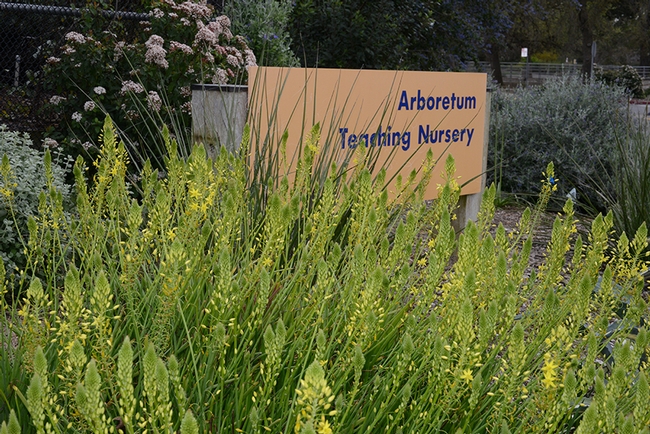
The UC Davis Arboretum Teaching Nursery will be the site of a Member Appreciation Sale on Saturday, March 12. Prospective members can join at the door. (Photo by Kathy Keatley Garvey)
Bee My Valentine
Bee my valentine. There's something about a honey bee foraging on a flowering quince that makes...

Honey bee foraging on flowering quince. (Photo by Kathy Keatley Garvey)

Full speed ahead--A pollen-laden honey bee heads for another quince blossom. (Photo by Kathy Keatley Garvey)

Honey bee adjusting her load. (Photo by Kathy Keatley Garvey)
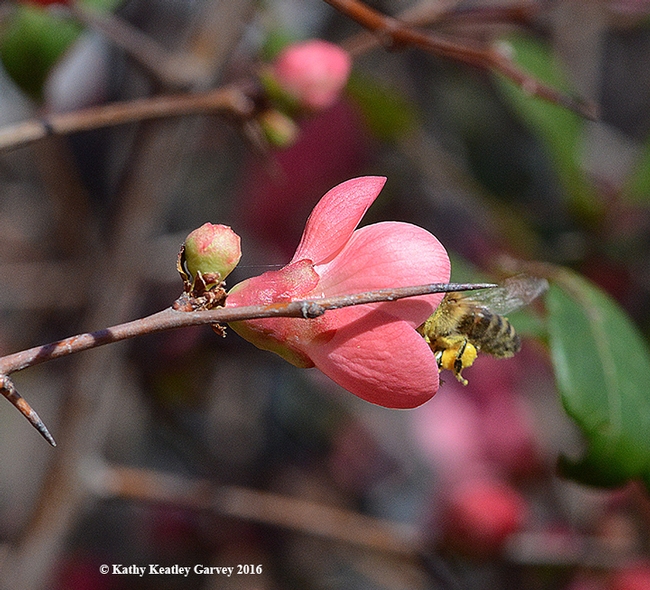
The entrance: a honey bee enters a quince blossom. (Photo by Kathy Keatley Garvey)
How to Tell It's Almost Spring
You can tell it's almost spring when you hear bees buzzing on the flowering crab apples. Spring...

Honey bee foraging on flowering crab apple. (Photo by Kathy Keatley Garvey)
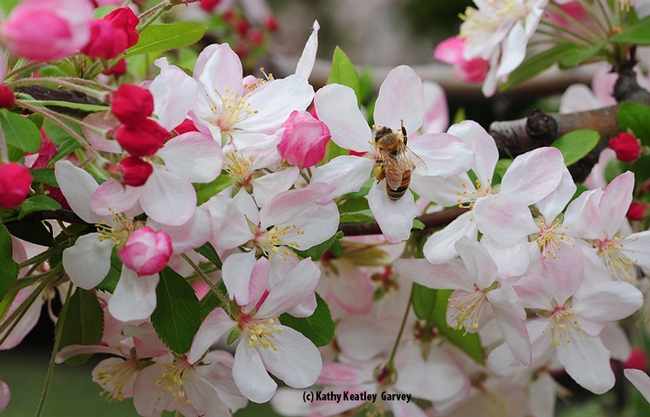
Check out the pollen load of this honey bee on flowering crab apple. (Photo by Kathy Keatley Garvey)

This bee is making a beeline for the next crab apple blossom. (Photo by Kathy Keatley Garvey)
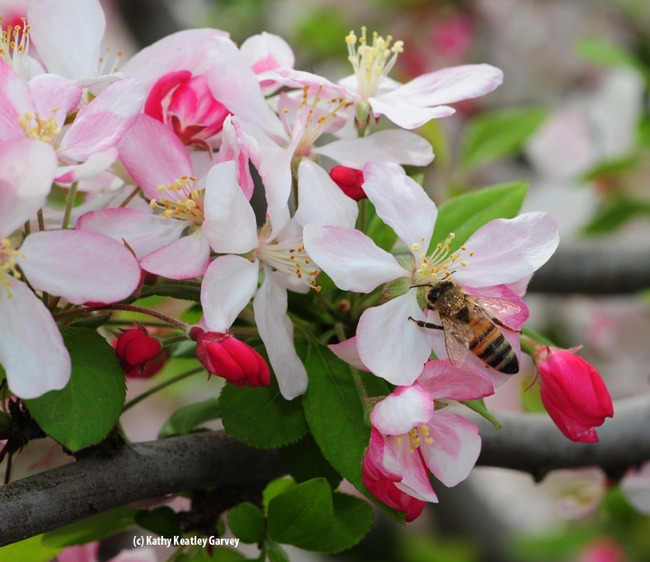
This bee is coated with pollen from the crab apple blossoms. These photos were taken in the Sonoma Cornerstone gardens. (Photo by Kathy Keatley Garvey)
